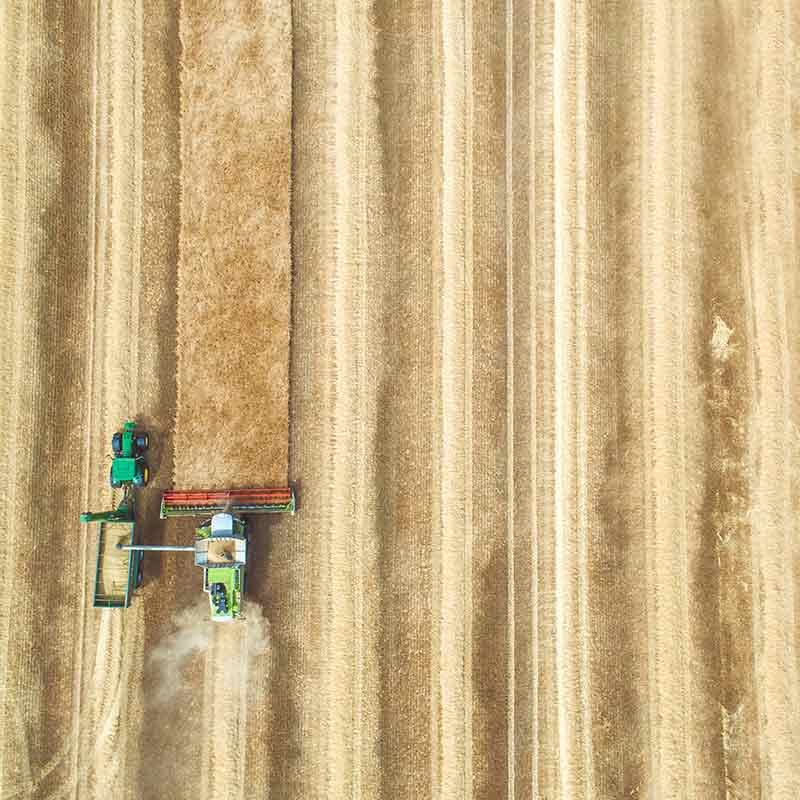
Measuring the profitability of conservation agriculture
Published: January 25, 2021 by Environmental Defense Fund (EDF+Business)
Sustainable Agriculture
Agricultural conservation practices like conservation tillage, cover crops and nutrient management provide many environmental benefits including improved water quality, reduced soil erosion, improved soil health and carbon sequestration.
Despite these well-known environmental benefits, the use of conservation practices in the U.S. remains relatively low, with no-till being used on 26.3% of U.S. cropland and cover crops on only 3.9%.
Expanding on-farm conservation practices requires closing the information gap on the financial impact these practices have on farm revenue, operating costs and long-term profitability.
To help close this information gap, EDF worked with a number of researchers in conservation agriculture to publish A practitioner’s guide to conducting budget analyses for conservation agriculture [PDF]. The guide is designed to support other researchers, academics, conservation nonprofits and any organizations interested in measuring the farm financial outcomes of agricultural conservation practices.
The guide is informed by a thorough review of 33 farm budget case studies and five multi-farm analyses that examined conservation adoption, in addition to input from leading experts on conservation agriculture and farm financial management.
Integrating the lessons in this guide to strengthen financial accounting of conservation practices could support higher adoption of these practices, ultimately boosting agricultural resilience and supporting long-term productivity.
The guide was designed to support a wide range of practitioners interested in understanding, researching and communicating the farm financial implications of conservation practices. It can easily be adapted to specific needs, objectives and limitations.
The guide is especially useful for the following practitioner groups and their conservation objectives:
- Conservation and producer organizations looking to support their conservation advocacy and farmer technical assistance with financial solutions and information.
- Agribusinesses looking to enhance their agronomic and financial services with conservation practice data.
- Universities and extensions looking to expand the literature on financial impacts of adopting conservation agriculture practices and provide their states with production budget estimates of conservation tillage, cover crop, nutrient management and diverse rotation production systems.
The guide includes a checklist of key methodological considerations in preparing for and conducting conservation agriculture budget analyses.
The guide can also be used as a decision support tool for key junctures in executing a robust analysis. Each key issue presented includes a presentation of different methodological options, best practices and adjustments based on the objectives.
Finally, the guide functions as a collection of resources that can help researchers as they consider different methods, by presenting examples and lessons learned from existing studies.
Related Content
Ag retail helps farmers conserve profitably
Report
TSC: Sustainable animal feed guide
Report
Decreasing nitrogen pollution
Video
Optimizing fertilizer use
Video
Retail supplier resources: agriculture
Guide
Sustainable agriculture 101: introduction
Guide
Sustainable agriculture 101: problem & solutions
Guide
Sustainable agriculture 101: strategies
Guide
Sustainable agriculture 101: understand landscape
Guide
Food waste 101: introduction
Guide
Food waste 101: get informed
Guide
Food waste 101: understand the landscape
Guide
Assess impact & opportunity: agriculture
Guide
Identify stakeholders: agriculture
Guide
Set goals & objectives: agriculture
Guide
Science based targets case study: Kellogg's
Case Study
Supply chain partnership: Smithfield case study
Case Study
Achieving consumer product sustainability at scale
Webinar
TSC Coffee Supply Chain Diagram
Tool
Field to Market 2017 collaboration of the year
Case Study
Field to Market brochure
Handbook
Field to Market national indicators report
Report
Field to Market metrics factsheets
Handbook
Sustainable commodity supply chains project
Case Study
Most Popular
Database of EDF Climate Corps Projects
Case Study
Testing for heavy metals: food, food ingredients
Guide
RILA's Corporate Clean Energy Procurement Index
Report
EPA guidance on reducing supply chain emissions
Article
Smart Moves – Creative Supply Chain Strategies
Article
USDA revises date labeling to reduce food waste
Initiative
GHG quantification standard for organizations
Tool
Industrial Assessment Center technical documents
Tool
Browse Industrial Assessment Centers case studies
Database
Climate and supply chain: business case for action
Report
Precision Conservation Management
Initiative
From field to fork: Tyson harnesses ag tech for sustainable food
Blog
